Background:
Since Equilibrium Tuning began advertising the Blaze Performance ATOM Race intake over two years ago, the business has consistently claimed the product performs better than intakes offered by competitors.
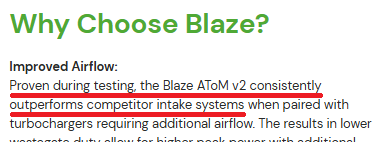
The company presents what it claims are examples of the Blaze ATOM intake outperforming competitor intakes, but in violation of Federal Advertising Law omits essential information about the intakes the comparison is with:
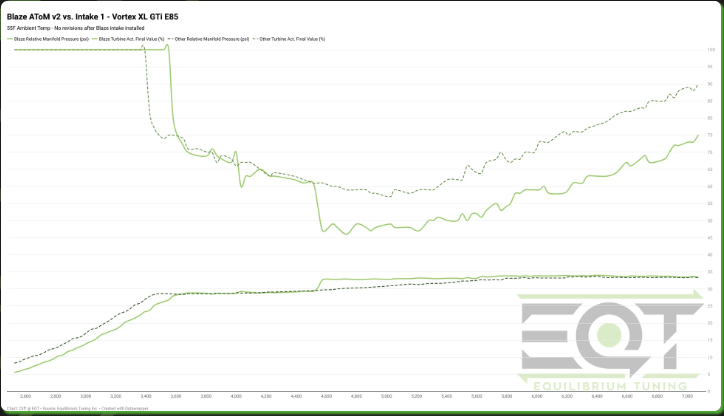
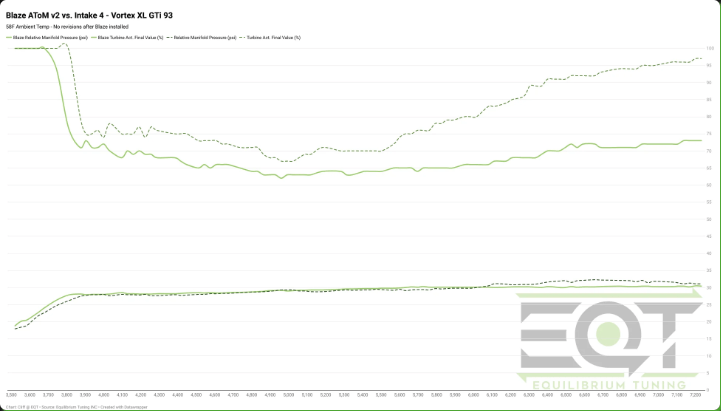
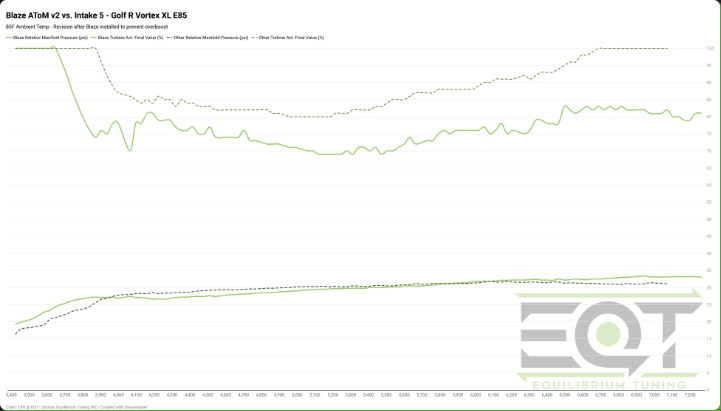
Section 5 of the FTC Act prohibits deceptive acts and practices in or affecting commerce. A representation, omission, or practice is deceptive if it is likely to mislead consumers acting reasonably under the circumstances and is material to consumers’ decisions.
FTC Policy Statement on Deception, 103 FTC 174 (1983)
In two previous posts, examples of EQT promoting misleading comparisons were reviewed. In one example, Matt from EQT advertised a misleading comparison with a Racingline R600 intake attached to a stock-sized APR turbo inlet elbow. The second example was a consumer post in the EQT business Facebook group where the APR open intake was paired with the APR stock-sized elbow.
In both examples, stock-sized elbows were used with a hybrid turbocharger. This mismatching of parts has been shown to significantly reduce turbocharger performance (MST vs Epman APR Clone Street Comparison).
A question I had was, aside from EQT misleading consumers by mismatching parts, could an intake be found that would underperform the Blaze ATOM in a manner consistent with the charts presented by EQT?
Intake selection:
I had already compared the Blaze ATOM with the APR Pex open intake, the Racingline R600, and a modified stock GTI intake, and in each case, the “competing” intake performed the same as the Blaze Performance ATOM – proving EQT’s advertising claim false.
It was clear that to find an aftermarket intake that would make the Blaze ATOM look as good as EQT portrays it, I’d need to search for a “baby seal intake” to club. I needed to get my hands on one of the poorest-performing intakes I knew of.
Presenting the APR Carbon Fiber closed intake.
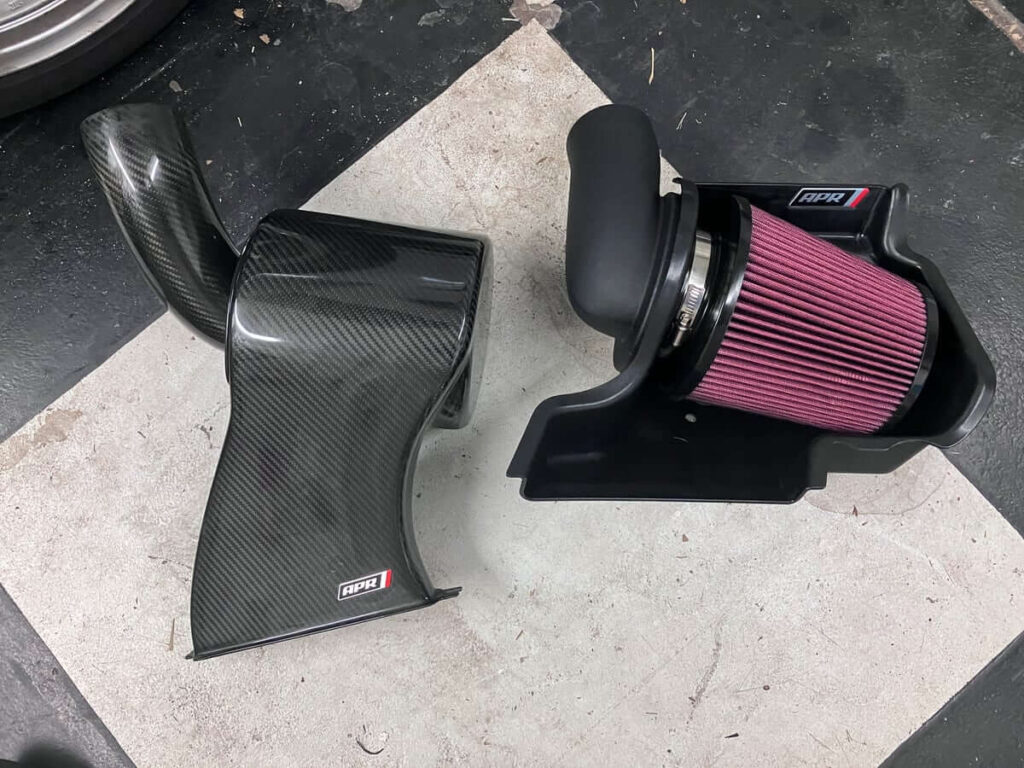
I contacted a fellow owner with an APR closed intake and arranged to use it for testing to compare with the Blaze Performance ATOM.
As a bonus, this intake is “well used” with a dirty air filter—all the better to make the Blaze ATOM look good.
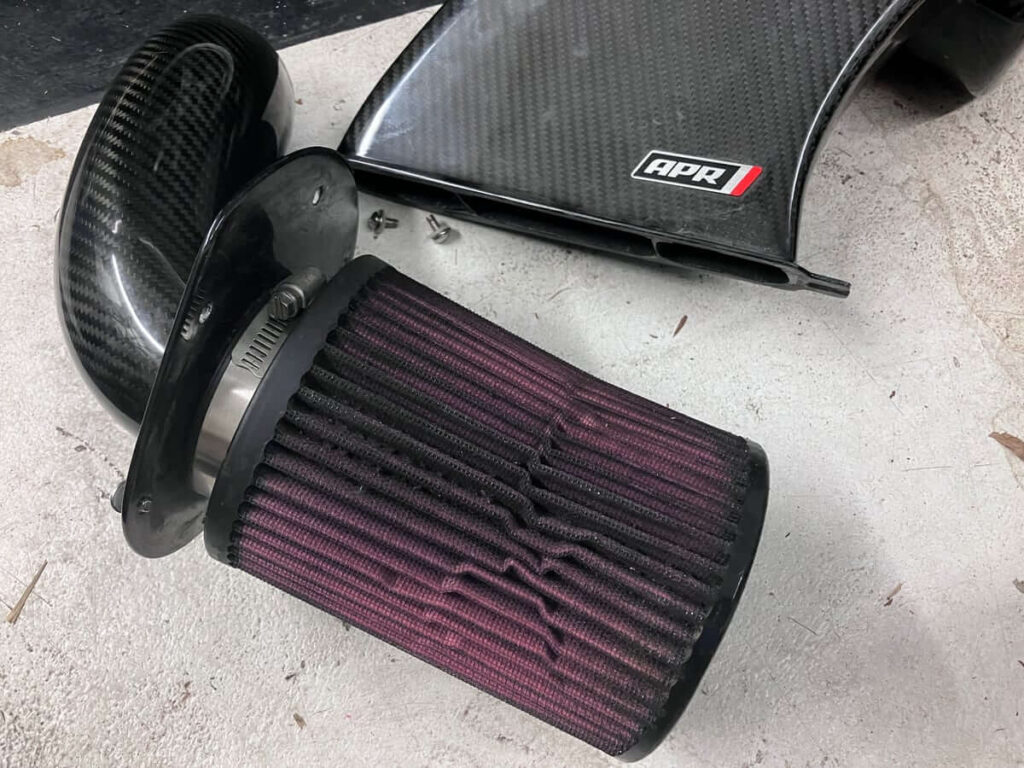
This was shaping up to be an EQT-worthy comparison.
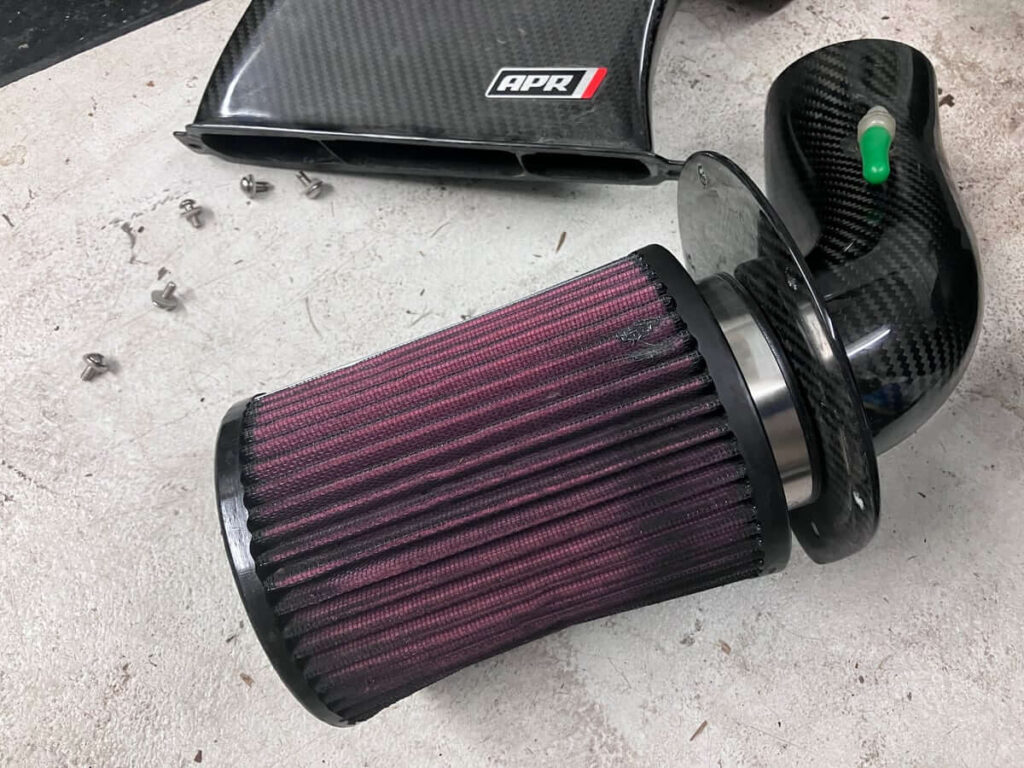
Test process:
The intakes are installed on a Mk7 GTI equipped with a Mabotech M520 hybrid turbocharger operating with a Russell Road & Racing tune that makes 34 psi through the mid-range and tapers to 32 psi.
Engine variables are recorded during a full-throttle fourth-gear pull, starting around 2,000 RPM and ending at around 6,500 RPM.
I first installed the Blaze Performance ATOM Race to collect another data log.
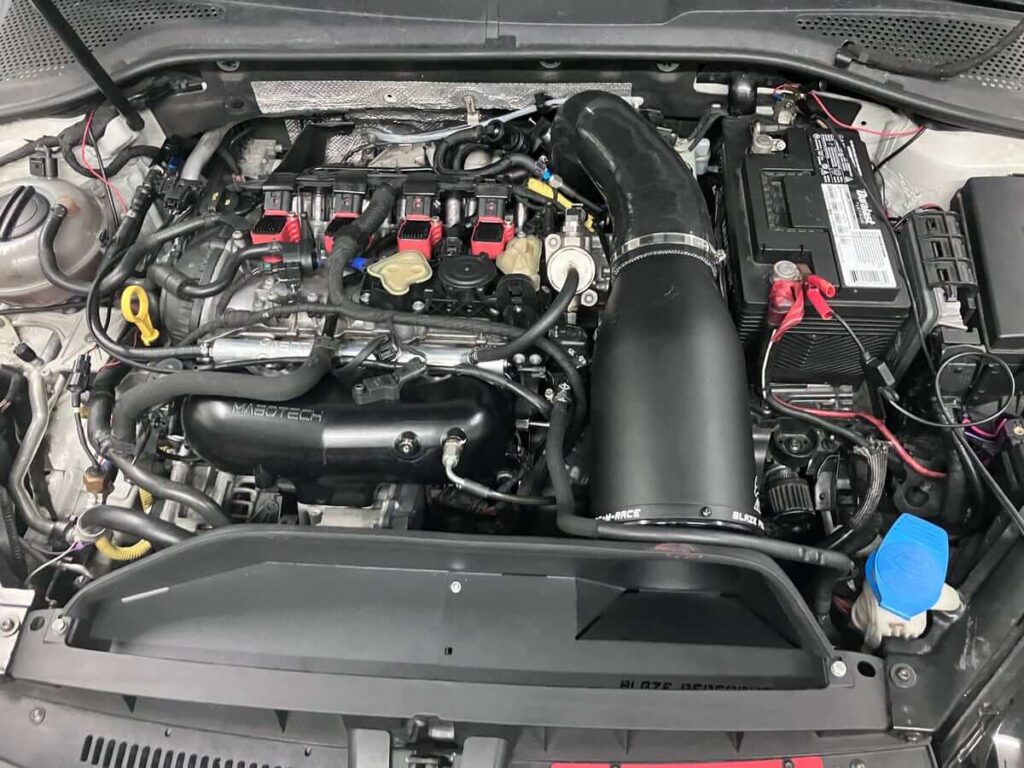
Next, the APR closed carbon fiber intake is installed along with the MST turbo inlet hose and DBV2 turbo inlet elbow.
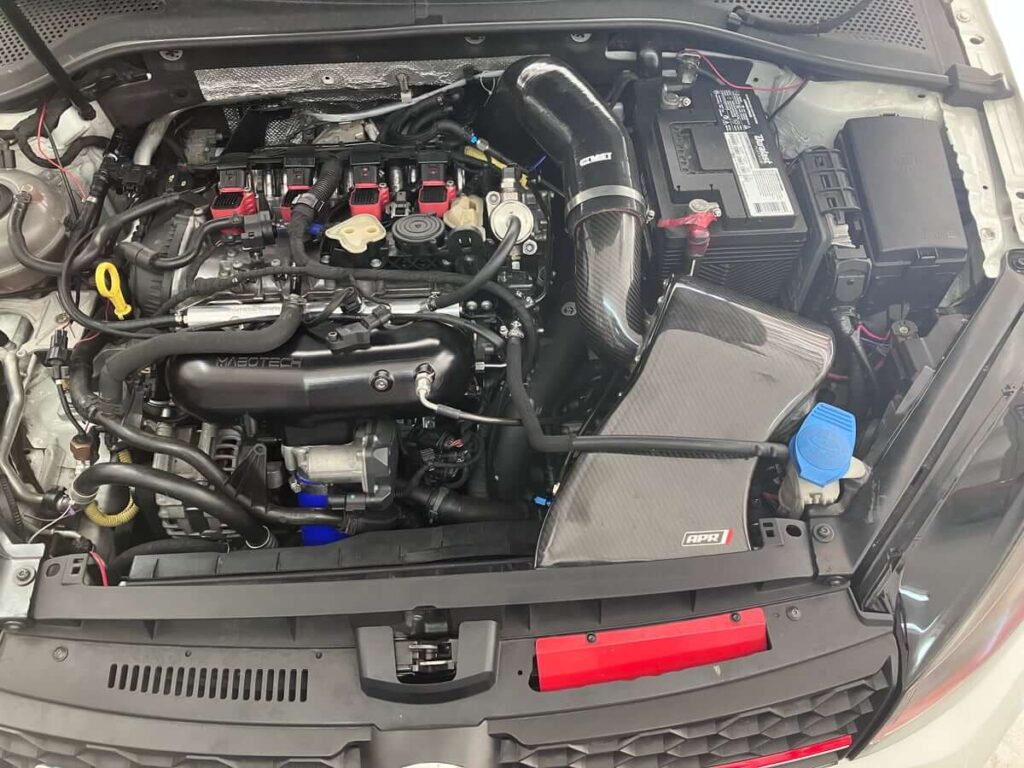
An additional configuration that is included in the comparison is the modified stock GTI intake (BMC filter, MST hose, DBV2 TIP, Snow Guard removal, modified duct, cutout in lower airbox).
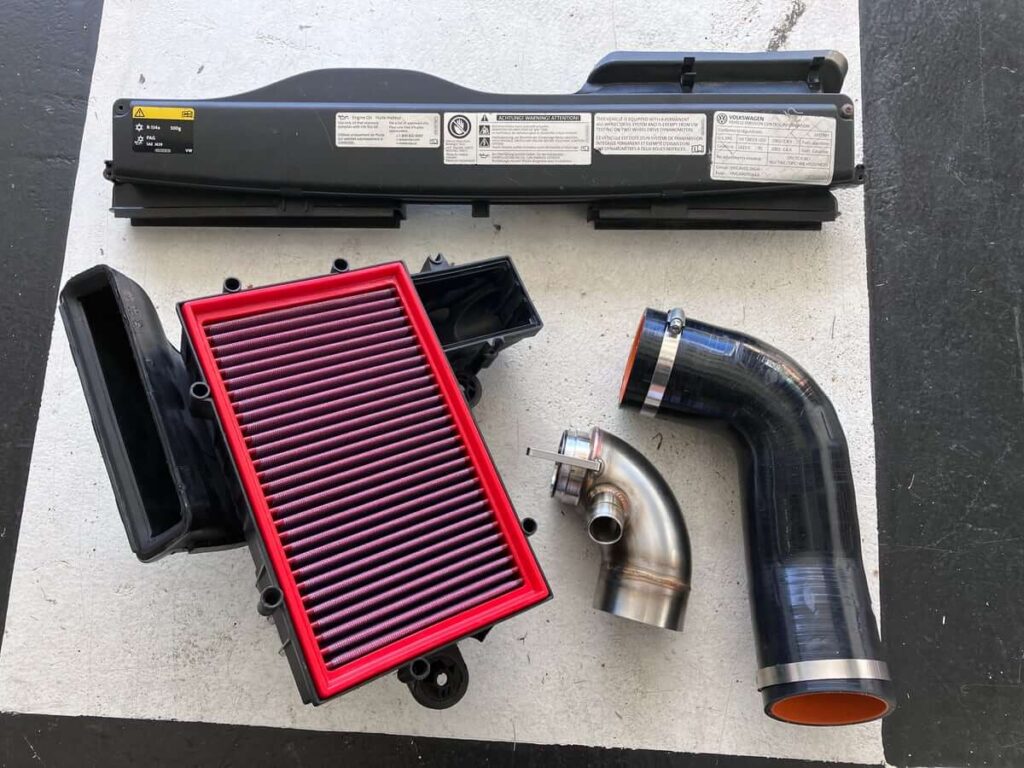
Test results:
An important condition to control for this comparison is the outside air temperature. All three intakes were compared under similar outside air temperatures.
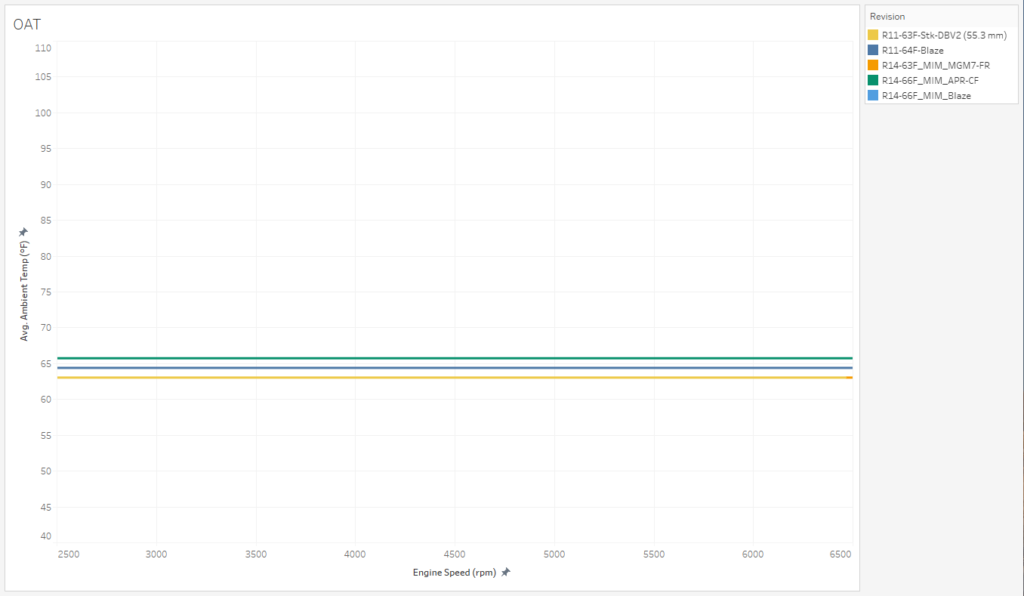
The EQT comparison of the Blaze Performance ATOM Race with a competitor intake is of turbocharger wastegate duty cycle (WGDC), the following chart shows how the WGDC compares between these intakes.
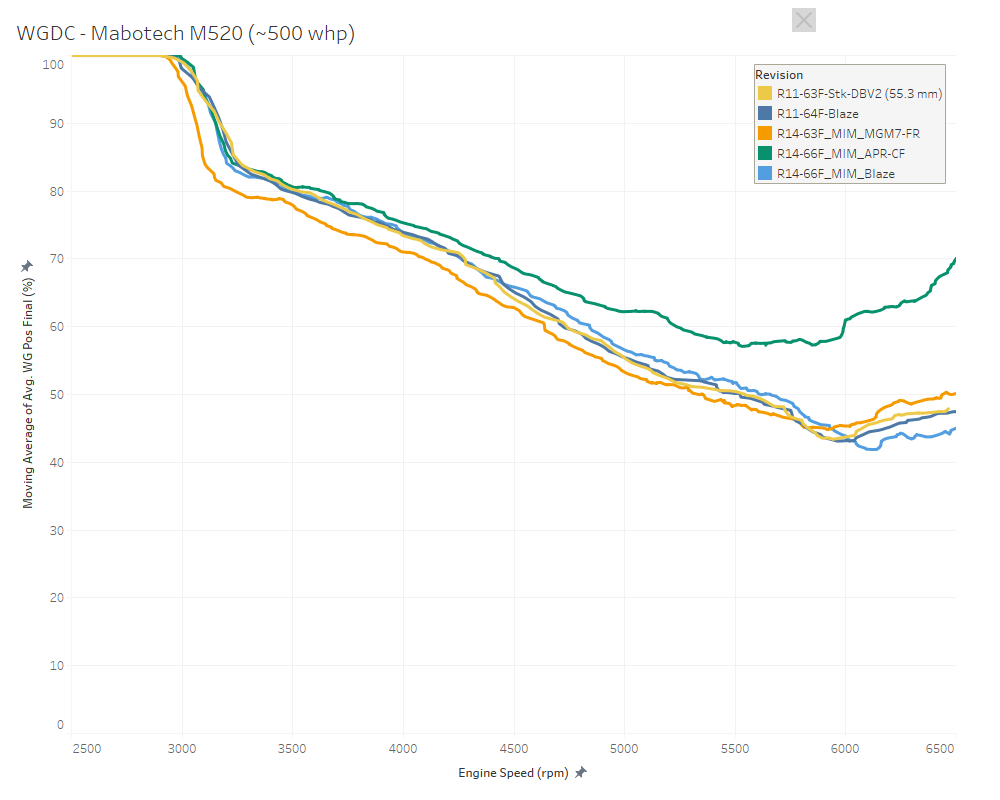
We have a winner. An intake that makes the Blaze Performance ATOM look as good as EQT advertises.

The next chart removes the stock GTI intake results since they overlay the Blaze Performance ATOM data.
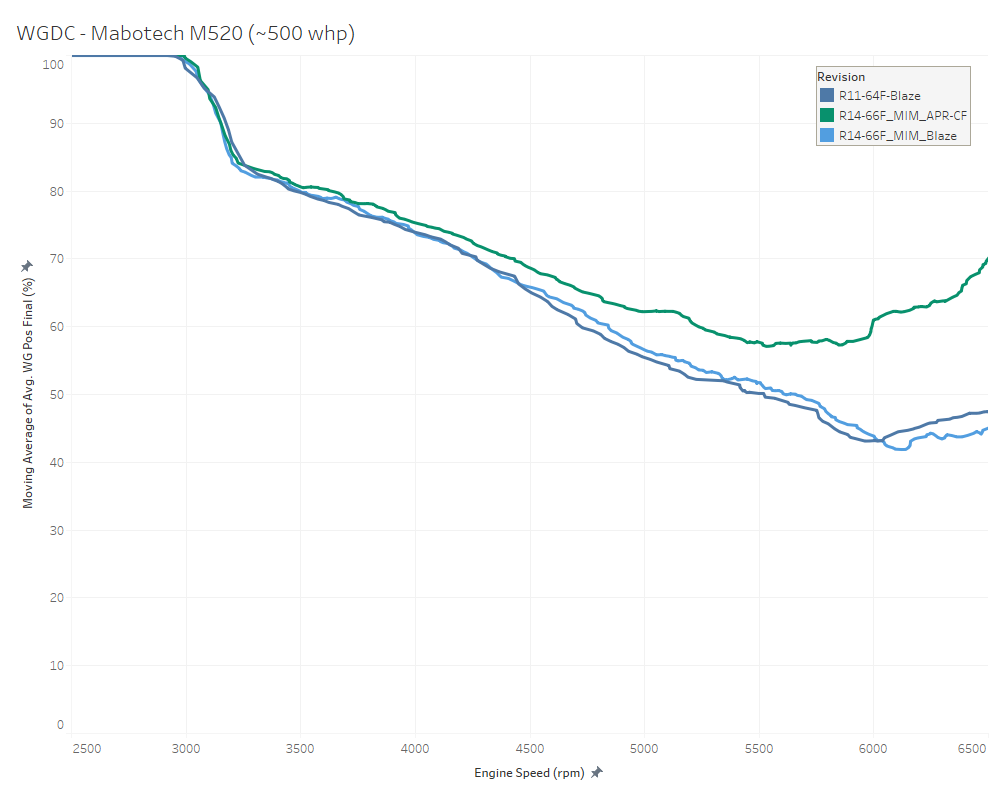
Pulling some of the data points from the EQT Blaze charts and plotting the APR closed intake versus them shows that the EQT comparison intakes have slightly higher WGDC through the midrange, and the APR intake has a higher WGDC at the top end.
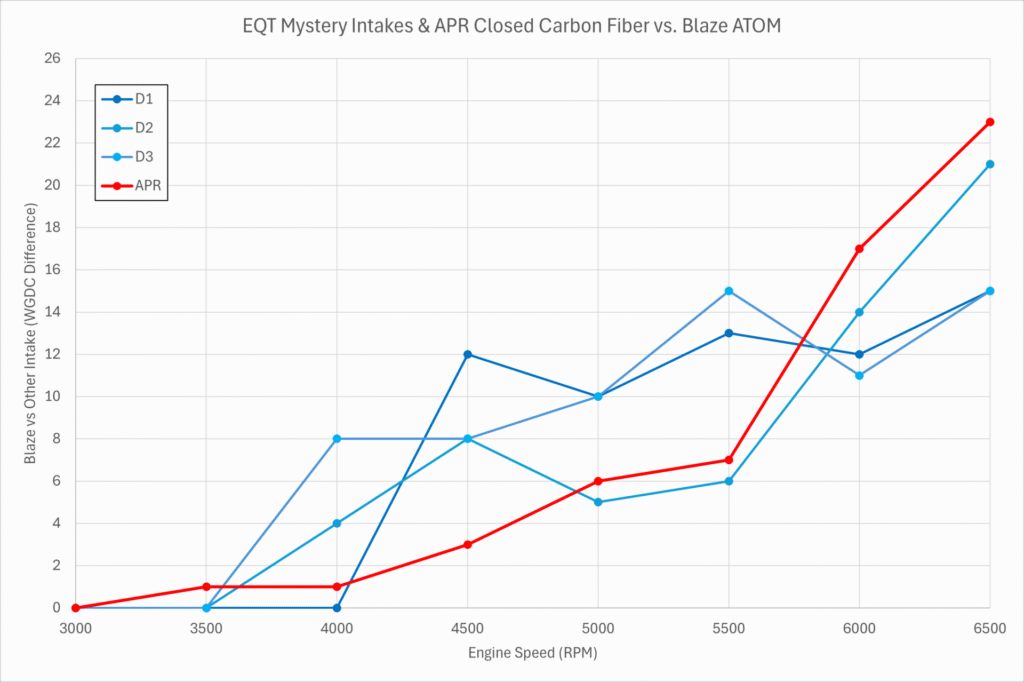
These results suggest that the APR closed intake is a good candidate to be one of EQT’s mystery intakes.
Note: This conclusion assumes that the EQT comparison chart includes an appropriately sized turbo inlet elbow for the turbocharger. Past evidence from EQT advertised comparisons does not support this assumption.
Evaluating the acceleration data using Virtual Dyno shows that the APR intake costs approximately 11 peak WHP compared to the Blaze ATOM.
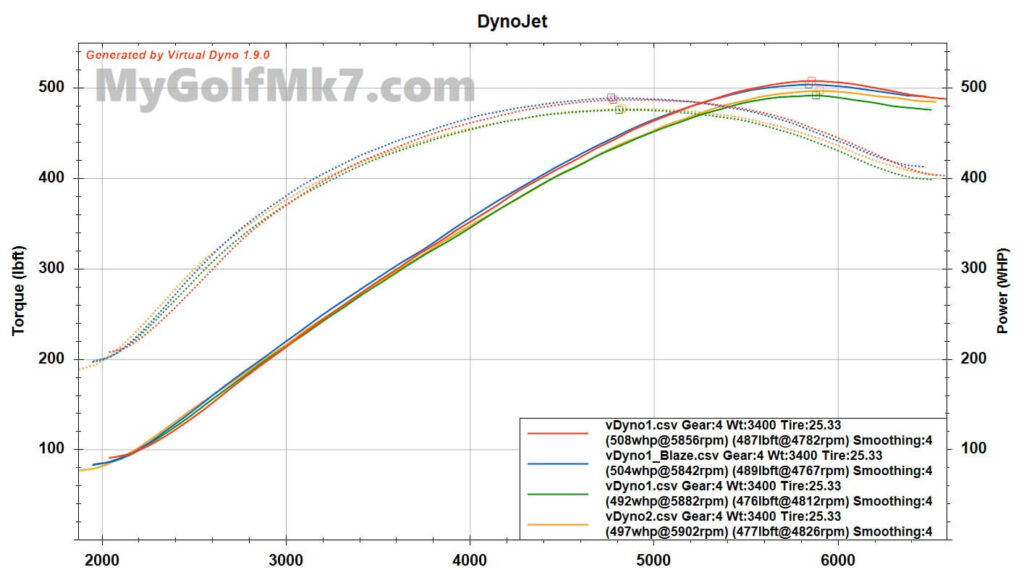
Bench test:
The next question was how this APR intake performs on a flow test.
It’s important to recall the dirty condition of the air filter and how that is likely to reduce airflow through the intake compared with a new air filter.
The APR intake and other intake components are gathered for flow testing.
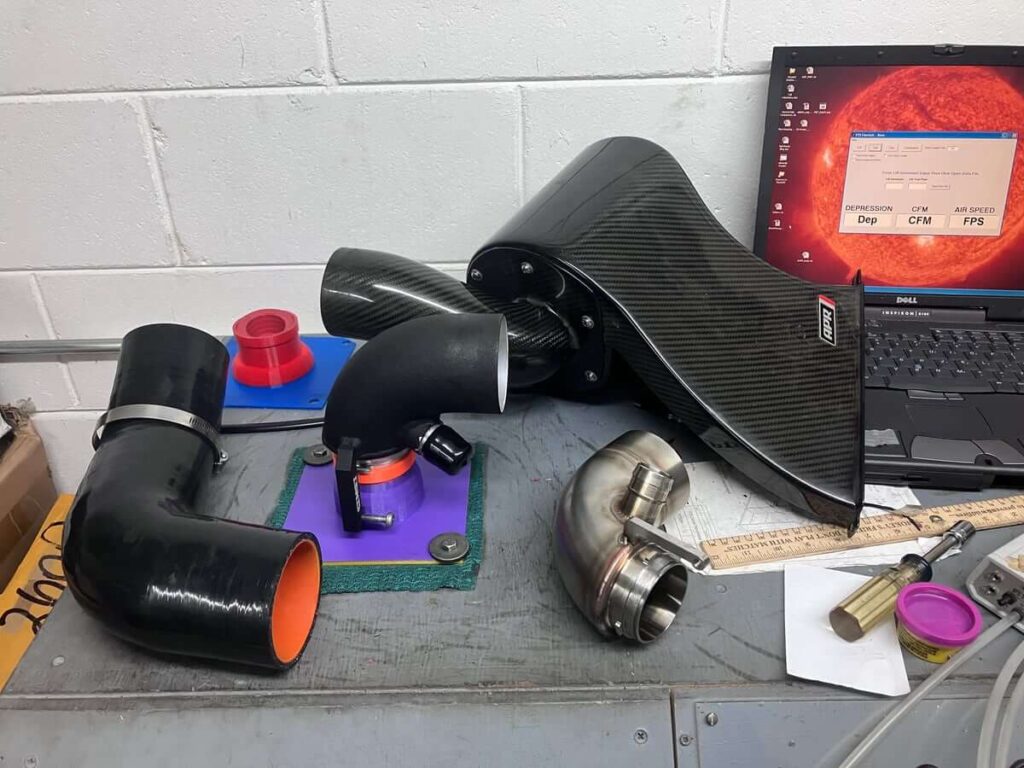
The APR intake is attached to the MST inlet hose, which is connected to the DBV2 turbo inlet elbow. Finally, the elbow is attached to an adapter that simulates the compressor inlet of a hybrid turbocharger with a 56 mm ID.
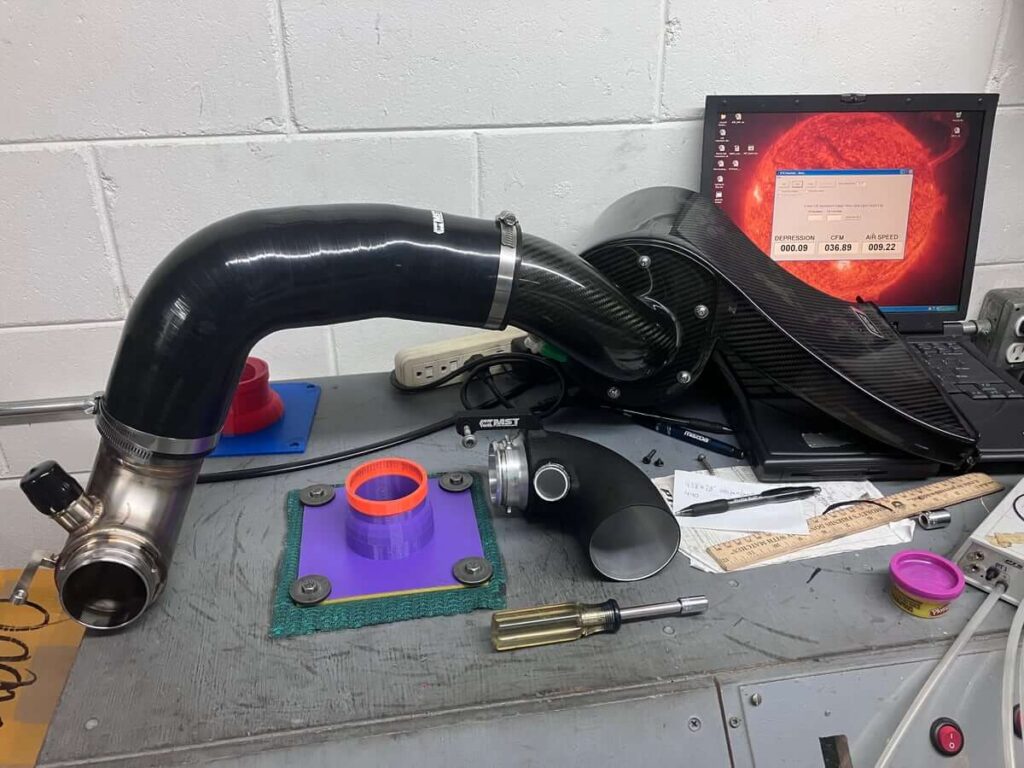
The intake is tested at a depression of 28″ of H2O.
At this pressure, the APR intake setup flows 440 CFM.
This result is shown on the chart along with the Blaze Performance ATOM Race and other intakes tested with the hybrid adapter.
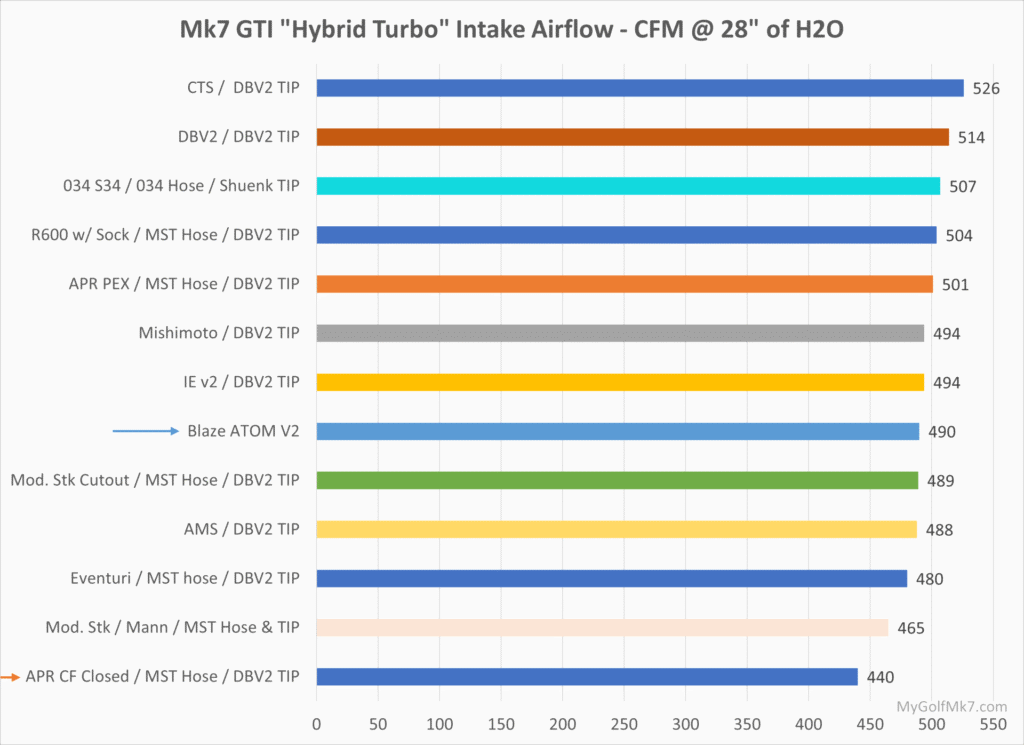
Unsurprisingly, the APR intake flows significantly less than the Blaze ATOM and modified stock GTI intake.
Conclusions:
This post compared turbocharger wastegate values on a GTI equipped with a Blaze ATOM intake, APR closed intake, and modified stock GTI intake.
The APR closed intake with a dirty air filter caused the highest wastegate duty cycle, and the difference compared with the Blaze ATOM and stock GTI intakes was similar to the differences shown by Equilibrium Tuning.
The APR closed intake was flow tested and found to flow the least of 11 intakes tested using a hybrid turbocharger adapter.
Note: When tested with a new air filter and a stock-size turbo adapter, the APR closed intake is in the bottom 11% of all intakes tested for flow performance.
The APR closed intake with a dirty air filter is a good candidate for being one of the mystery intakes that EQT uses in its Blaze Performance ATOM Race intake advertising.
This comparison clearly shows the importance of the FTC Policy Statement on Deception and the harm caused to consumers by omitted information. Vague advertising claims and cherry-picked comparison products can produce misleading information.
